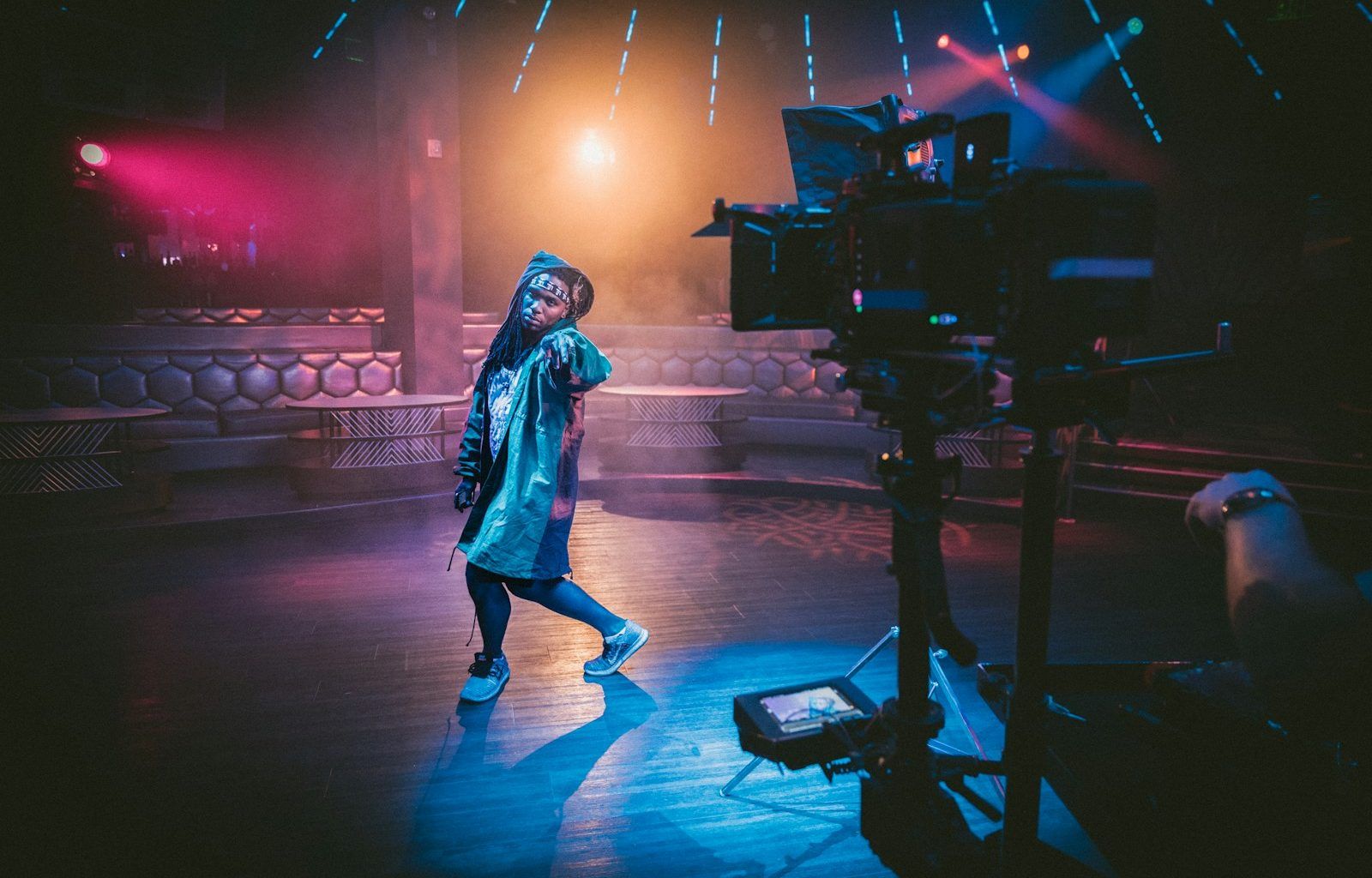Why produce a music video Matters
Have you ever watched a music video and felt completely captivated? Music videos are a powerful way to connect with an audience, showcase your creativity, and elevate your music to a whole new level. They’re not just about the song—they’re about telling a story, evoking emotions, and creating a lasting impression. Producing a music video might feel like a big task, but with the right approach, it can be both manageable and incredibly rewarding. In this guide, we’ll walk you through every step of produce a music video. Whether you’re an independent artist, a filmmaker, or just someone curious about the process, this guide is for you.
Step 1: Define Your Vision
Before you jump into production, take a moment to think about what you want your music video to achieve. Ask yourself:
- What message or story do I want to convey?
- How should the video complement the song?
- Who is my target audience?
Having a clear vision will guide every decision you make. Start by listening to your song on repeat. As you do, imagine visuals that match the mood, tone, and lyrics. Sketch out your ideas or write them down. This doesn’t have to be perfect—it’s just the foundation for your creative process.
Step 2: Create a Budget
Let’s face it: producing a music video can get expensive. But don’t worry; you can create something amazing even on a tight budget. Start by outlining how much you’re willing to spend. Your budget will determine factors like location, equipment, and the size of your crew. If you’re working with limited resources, focus on creativity rather than expensive gear. A simple, well-executed idea can outshine a high-budget production if it’s done with care.
Step 3: Write a Script and Storyboard
Now that you have a vision and budget, it’s time to put your ideas on paper. Write a script that outlines what happens in your music video, scene by scene. Be specific about details like:
- Locations
- Characters
- Actions
- Key moments that align with the song’s lyrics or beats
Next, create a storyboard. This is a series of sketches that show what each shot will look like. You don’t need to be a professional artist—stick figures will do! A storyboard helps you visualize the video and ensures everyone on your team is on the same page.
Step 4: Assemble Your Team
Producing a music video is a team effort. Even if you’re doing a DIY production, you’ll likely need help. Some key roles to consider include:
- Director: Oversees the creative vision and manages the shoot.
- Cinematographer: Handles the camera work and lighting.
- Editor: Brings the footage together in post-production.
- Actors/Dancers: If your video includes performance scenes.
Reach out to friends, local creatives, or online communities to find collaborators. If you’re on a budget, consider working with film students or up-and-coming talent who are eager to build their portfolios.
Step 5: Scout Locations
The setting of your music video can make or break its overall vibe. Think about locations that align with your vision. Whether it’s a quiet beach, a bustling city street, or a cozy studio, the right location adds depth and authenticity to your video. When scouting, consider:
- Accessibility
- Permits and permissions
- Lighting conditions
- Costs (some places might require a rental fee)
If you’re working on a budget, look for free or low-cost options like public parks or friends’ homes.
Step 6: Gather Equipment
You don’t need Hollywood-level gear to produce a great music video. Start with the basics:
- A good-quality camera (even some smartphones can work!)
- Tripod or stabilizer for steady shots
- Lighting equipment or natural light sources
- Audio playback device for syncing the song during filming
If you don’t own the equipment, consider renting or borrowing it. Many local shops and online platforms offer affordable rental options.
Step 7: Plan Your Shoot
Before the cameras start rolling, plan every detail of your shoot. Create a shooting schedule that outlines:
- The order of scenes
- Time allocated for each shot
- Breaks for the cast and crew
Having a schedule keeps everyone organized and ensures you stay on track. It’s also a good idea to rehearse scenes beforehand, especially if they involve choreography or complex movements.
Step 8: Shoot Your Video
The big day is here! During the shoot, stay flexible but focused. Things don’t always go as planned, but a positive attitude and problem-solving mindset can save the day. Remember to:
- Communicate clearly with your team
- Review footage as you go to ensure quality
- Capture extra shots for flexibility during editing
Don’t rush the process. Take your time to get each shot just right.
Step 9: Edit Your Footage
Editing is where your music video truly comes to life. Start by organizing your footage and selecting the best takes. Use editing software like Adobe Premiere Pro, Final Cut Pro, or free options like DaVinci Resolve. Key steps in editing include:
- Syncing the video with the song
- Cutting and arranging clips to match the rhythm
- Adding effects, transitions, and color grading
If editing feels overwhelming, consider hiring a professional editor. Their expertise can make a huge difference in the final product.
Once your music video is complete, it’s time to share it with the world. Upload it to platforms like YouTube, Vimeo, and social media. Promote it through:
- Teasers and trailers
- Behind-the-scenes content
- Collaborations with influencers or bloggers
Encourage your audience to like, comment, and share. The more engagement your video gets, the wider its reach will be.
Conclusion: Start Your Music Video Journey Today
produce a music video might seem daunting at first, but it’s an achievable and exciting process. With careful planning, a clear vision, and a dedicated team, you can create something truly special. Remember, it’s not about having the biggest budget or the fanciest equipment—it’s about expressing your creativity and connecting with your audience. So, what are you waiting for? Start planning your music video today and bring your music to life in a whole new way.
For further reading, explore these related articles:
- The Fastest Song to Reach 1 Billion Streams – A Journey Through Musical Magic
- Hailee Steinfeld: A Rising Star Who Shines in Every Field
For additional resources on music marketing and distribution, visit Deliver My Tune.






